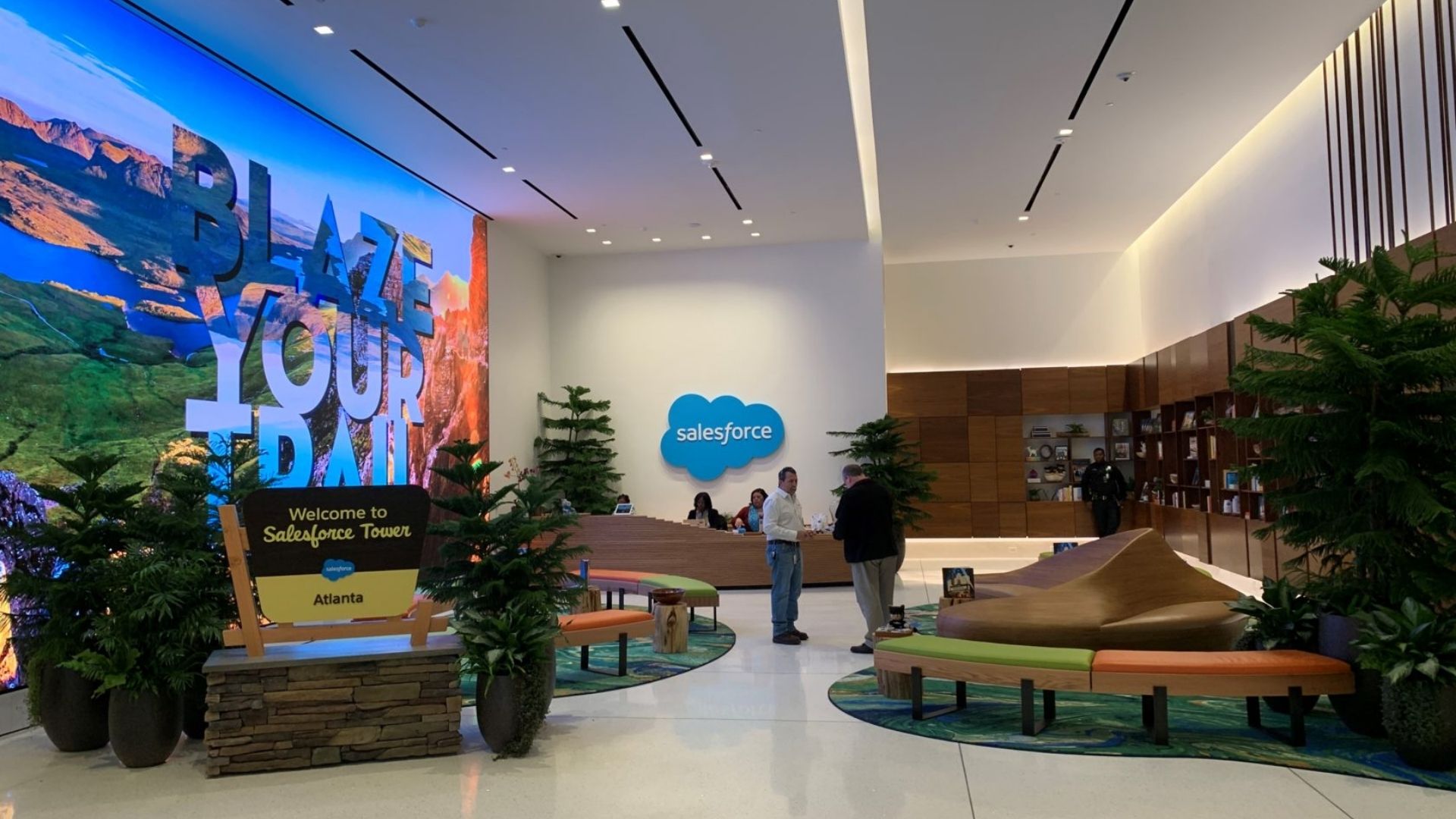If you’ve worked with Salesforce long enough, you’ve probably realized that automation is both a blessing and a balancing act. Everyone wants things like lead assignments, approvals, renewals, and data syncs to “just happen automatically”, but making that happen efficiently, without breaking other processes, takes strategy.
Two of the most powerful tools for automation in Salesforce are Salesforce Flow and Apex Triggers. They often overlap in what they can do, but they’re built for very different types of problems. Knowing when to use each, and when to combine them, is the difference between a smooth, scalable system and a tangle of logic that no one wants to touch.
Let’s break it down.
What Salesforce Flow Really Is (and Why It’s So Popular)
Think of Salesforce Flow as the evolution of point-and-click automation. It’s the tool Salesforce has been pushing as the future, and for good reason.
Flow lets you build automation visually, using drag-and-drop elements, without writing any code. Want to create a record, send an email, or update related data when something changes? You can do all that through Flow.
There are a few types:
- Record-Triggered Flows: Run automatically when records are created, updated, or deleted.
- Screen Flows: Let users step through guided experiences (like onboarding or case resolution).
- Scheduled Flows: Run at set times, perfect for reminders, updates, or batch jobs.
The beauty of Flow is how accessible it is. Admins, analysts, or even operations managers can design automations directly in Salesforce, no dev handoff needed.
It’s flexible, visual, and, with the newer Flow Orchestrator, capable of handling multi-step business processes that once required serious coding.
When Flow shines:
- The logic is straightforward and easy to visualize.
- You want to empower admins to own and maintain automations.
- You need to roll out changes fast and iterate often.
- You’re working on low to medium data volumes.
But here’s the truth many don’t talk about: Flows can get messy fast.
Once you start stacking multiple record-triggered Flows, handling exceptions, and managing large data volumes, debugging becomes painful. If a Flow fails midway through a transaction, pinpointing the issue isn’t always intuitive. And if your process involves complex branching logic or needs full control over transactions, you’ll quickly hit the ceiling.
Apex Triggers: When Automation Needs Muscle
Now, Apex Triggers are a different story. They’re code-based, which means they require a developer, but they give you complete control.
Triggers let you automate processes that are too complex or too performance-sensitive for Flow. They run “under the hood” before or after database operations, and can handle intricate logic, massive data volumes, and multi-object relationships.
For example:
- Updating thousands of related records when one Account changes.
- Integrating with external systems in real-time.
- Applying advanced business rules that depend on complex data conditions.
- Managing asynchronous or queued operations where timing and order matter.
Apex Triggers are like the manual transmission of Salesforce automation: more control, more power, but also more responsibility. You can structure them efficiently, handle errors gracefully, and design for bulk data operations. But they also demand testing, version control, and disciplined development.
When Apex shines:
- Your automation touches multiple objects or systems.
- Performance and data integrity are critical.
- You need complex conditional logic or recursion control.
- You want full transparency into how and when logic executes.
Of course, triggers aren’t plug-and-play. They require development expertise, testing frameworks, and ongoing maintenance. But when you need fine-tuned performance or complex behavior, they’re irreplaceable.
Flow vs Apex: A Practical Comparison
| Feature / Aspect | Salesforce Flow | Apex Triggers |
| Skill Level Needed | Admin / Low-code | Developer / Code-based |
| Ease of Setup | Very easy (visual builder) | Requires coding & testing |
| Performance with Large Data | Can struggle with bulk updates | Optimized for large-scale data |
| Error Handling | Limited and UI-based | Full programmatic control |
| Maintenance | Easy for small setups, harder as Flows grow | Stable if structured properly |
| Governance Limits | Can hit limits quickly in complex automations | Can be optimized to handle limits |
| Testing & Debugging | Visual debugging, less control | Full test classes, better traceability |
| Scalability | Best for simple-to-moderate automations | Ideal for complex, enterprise-scale logic |
| Deployment | Declarative (via Setup or Change Sets) | Through metadata API, code deployment |
| Ideal For | Business process automation, quick iterations | Enterprise logic, integrations, scalability |
When to Use Which and How to Combine Them
Here’s the rule of thumb I use when advising teams:
Start with Flow.
If the business process can be easily expressed in clicks, Flow gets you there faster and keeps ownership with the admin team.
Switch to Apex when Flow becomes fragile.
If you find yourself stacking multiple Flows on the same object, or the process starts hitting limits or timeouts, that’s your signal to move to Apex. It’s not about capability; it’s about control and maintainability.
Combine them when needed.
Some of the best implementations use both. Flow handles the simple business logic, like routing or notifications, while Apex takes care of the heavy lifting behind the scenes.
Where Flow and Apex Work Best Together
Here’s a common real-world scenario: managing sales deal approvals.
- A Flow could handle the initial routing, sending deals to the right manager based on amount and region.
- An Apex Trigger could then validate related data, calculate complex commission rules, or push updates to your ERP system.
Both tools work together. Flow provides visibility and flexibility; Apex ensures performance and reliability.
When designed in harmony, they eliminate bottlenecks, improve system resilience, and give both business users and developers what they need: speed and stability.
How to Decide What’s Right for Your Business
If you’re still unsure where to start, think about your team, data, and timeline.
- If you have a strong admin team and your automations revolve around guided processes, Flows will keep you agile and efficient.
- If you’re dealing with complex integrations or high-volume transactions, Apex Triggers give you the control and performance you need.
- If you want the best of both worlds, start small with Flow, validate your business logic, and then hand it off to Apex once the process matures.
In most growing organizations, both tools eventually coexist. Flow handles the business-facing tasks, while Apex operates quietly in the background, keeping everything stable, optimized, and compliant.
The right choice isn’t about picking a side; it’s about building a scalable automation strategy.
Building Balanced Salesforce Automation
Salesforce gives you a spectrum of automation options, not a one-size-fits-all solution. Flow is about speed, ownership, and accessibility. Apex is about power, performance, and precision.
If your automations are still evolving or mostly revolve around user-facing processes, Flow is perfect. But as your org grows and your logic becomes mission-critical, Apex becomes essential.
The best Salesforce orgs I’ve seen don’t pick sides; they design automation ecosystems where Flow and Apex coexist, each doing what it does best.
At Wildnet Edge, we help organizations strike that balance, designing automation strategies that scale. Our Salesforce teams know when to keep things simple with Flow, when to step in with Apex, and how to make both work in harmony. Because true automation isn’t about tools; it’s about building systems that grow with your business.

Anurag has spent years helping teams get the most out of Salesforce, and he loves sharing what he’s learned. He has extensive experience in CRM optimization, workflow automation, and cloud solutions. He is known for his ability to simplify complex processes, improve efficiency, and help teams achieve measurable results. Anurag enjoys solving operational challenges, exploring new Salesforce tools, and implementing strategies that drive tangible business outcomes. Beyond his professional work, he mentors teams, experiments with cloud technologies, and seeks innovative approaches to connect business needs with technology effectively.
 sales@wildnetedge.com
sales@wildnetedge.com +1 (212) 901 8616
+1 (212) 901 8616 +1 (437) 225-7733
+1 (437) 225-7733































